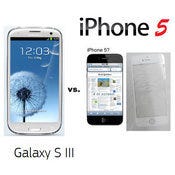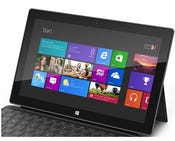In patent case testimony, Samsung expert witness says iPhone's snap back feature was used in other tech products long before Apple implemented it.


Apple iPhone 5 Vs. Samsung Galaxy S III: What We Know
Apple iPhone 5 Vs. Samsung Galaxy S III: What We Know (click image for larger view and for slideshow)
Samsung's attack on the uniqueness of its iPad and iPhone user interface's "snap back" feature seemed to be moving forward at the Apple vs. Samsung trial in San Jose on Wednesday. Andries van Dam, a highly respected voice in computer graphics, said he was familiar with snap back because he'd been teaching it for a decade.
So many claims and counter claims have flown back and forth during the infringement trial in U.S. District Court that Apple could charge Samsung with rustling and Samsung could charge Apple with cannibalism and hardly anyone would notice. But van Dam's statement that "prior art" both existed and was well understood by legions of university students over many years came as an arresting moment.
Snap back prevents the confusion that results when a user reaches the edge of an electronic document on a touch screen and keeps going into an empty space with no markers to give him his bearings. He scrolls through empty space, with no guidance on how to get back to the document. It's called "getting lost in the desert fog," among other things.
"Did the U.S. Patent Office consider that when it granted Patent 381," (381 are the last digits of Apple's snap back patent), which protects the snap back feature in its devices, van Dam was asked in direct examination by Samsung attorneys.
"The patent examiner didn't have the benefit of this knowledge of prior art. If he did, he wouldn't have been able to issue the patent," answered van Dam.
Van Dam is a professor of computer science and computer graphics at Brown University and author of Computer Graphics: Principles and Practice with three other authors, a frequently used text in computer graphics courses. He said he and fellow authors have just sent a new, revised version of 1,500 pages to the publisher.
[ Samsung isn't letting the trial slow it down. Read Samsung Galaxy Note 10.1 Details For U.S. Launch. ]
There are experts and there are venerated experts. The Dutch-born van Dam was the seventh person to get a doctorate in computer science in the U.S.--from the University of Pennsylvania in 1966. He founded the computer science department at Brown University and co-founded the show that would become the Association for Computing Machinery's Special Interest Group on Computer Graphics, better known as ACM-Siggraph.
His view on the snap back patent was in marked contrast one expressed by Ravin Balakrishnan, a University of Toronto computer science professor testified on Aug. 10 and described snap back to the jury, saying: "No one solved the problem before Apple."
Van Dam said the snap back was a feature of the DiamondTouch touch-sensitive table, developed at the Mitsubishi Electric Research Lab (MERL) in Cambridge, Mass., in 2004 and shown to many parties throughout 2005, or two years before the emergence of the iPhone. The table operated with a projector on a post shining a beam of light on it and four workers gathered around it. As they moved electronic documents around on the screen or made revisions, their movements were recorded by sensors and sent to an application running on a nearby PC, wired to the participant's chairs. An application called TableCloth on the DiamondTouch has a snap back feature in it.
The DiamondTouch was first mentioned by Clifton Forlines, a software developer at MERL, and Adam Bogue, a business development manager for DiamondTouch, in testimony Monday. The fact that Samsung raised it again via van Dam suggests that it agrees with Christopher Carani, chair of the American Bar Association's committee on design rights. Carani said in an interview that Samsung has to convincingly demonstrate prior art existed before Apple obtained its patents on the iPhone, including the 381 patent describing snap back, or it may found guilty of having infringed them.
Apple's attorneys had until van Dam shrugged off the DiamondTouch with a, "What, you expect us to compare this to the iPhone?" attitude. Michael Jacobs stepped up cross examination of Forlines Monday by asking where the original MERL DiamondTouch now resided. To the courtroom's surprise, Samsung's law firm, Quinn Emanuel, has bought it. One reason it might have done so would be to keep it out of the courtroom by claiming it was an exchange protected by attorney client privilege, lest Apple's attorneys tear into the early model to illustrate differences between it and the iPhone user interface.
Quinn Emanuel had purchased a second DiamondTouch as well.
"Where is it?" demanded Jacobs. "We want to see it."
This was an unusual demand. Both sets of attorneys are "on the clock," or running through a total of 25 hours allotted to them to both present witness and cross examine witnesses in the case. Asking for the DiamondTouch would consume time on the Apple side of the clock. Samsung had to pull out the DiamondTouch exhibit, but it was done at the request of Apple and counted against Apple’s time allotment. But to Jacobs, there was a point he wanted to make.

Microsoft Surface Tablet: 10 Coolest Features
Microsoft Surface Tablet: 10 Coolest Features (click image for larger view and for slideshow)
First a projector on a post with a heavy weight at the base was brought out. Then the touch sensitive table. Then the chairs. And finally the laptop to which all were attached. Jacobs could barely keep from smirking, you want to compare all this to the sleek, compact iPhone?
After van Dam, Apple attorney Rachael Kravens repeated the process. In her cross examination of van Dam, she asked that the entire DiamondTouch apparatus be assembled once again. There are differences in how the lighted table top operates, with sensors beneath the surface detecting human touches thanks to the projector's shining light, and the capacity resistance principle in the iPhone touch screen.
Kravens asked van Dam to confirm that DiamondTouch was a touch-sensitive computerized system. "Absolutely," he responded. "In every way, that is a touch-screen display."
The point had been made, despite the expert testimony, that the DiamondTouch seems to have little in common with the iPhone. But there are still risks to Apple in this exchange. There's no disputing that DiamondTouch demonstrates some form of snap back. Whether it will be judged by the jury as "prior art" to the iPhone's is another question.
But there is another issue lurking in the background as well. When applying for a patent, it is the responsibility of the applicant to cite all know cases of prior art. They are then listed on the front of the patent, if it's issued. There's no reference to DiamondTouch on 381.
[ Is the design of screen icons a sign that a product is unique, or just a standard way of showing an app? Read Samsung Designer Defends Copycat Icons In Apple Case. ]
Apple, of course, can claim that DiamondTouch was a little known system, which, considering its user interface, might be deemed to have enjoyed a more modest success than the iPhone. If you don't know about it, it's hard to list it as prior art.
But Bogue testified it was his job to give away DiamondTouch's to universities and he shipped 100 units. He came up with catchy applications, like Fractal Zoom, to demonstrate DiamondTouch in MERL's open lobby. Any visitor could play with it. The lab's receptionist was trained to steer visitors toward it as they waited for their appointments. In January 2005, or well before the iPhone, it was shown all day in January 2005 at the New School for Social Research in New York, with Senator Bob Kerry participating in its demonstration.
In addition, Bogue went on the road with a unit to demonstrate it to anyone who was interested. That was in 2005, and one of his stops was Apple in Cupertino, Calif. An engineering team watched his demonstration and asked questions. Bogue had not asked any Apple employees to sign a non-disclosure agreement. But Apple had asked him to sign an agreement to prevent any information he provided from becoming confidential.
The intricacies of prior art and who did what, when may prove beyond the grasp of the jury, which has no practice in deciding patent issues. But the lack of any reference to DiamondTouch on Apple's 381 patent in this context may also go down hard with them--for some of the same reasons.
Apple will argue that DiamondTouch and the other prior art--van Dam also pointed out the Launch Tile application on the HP iPaq handheld device as using snap back in its user interface--do not achieve the same effects of snap back on the iPhone and iPad. But the fact that knowledge of snap back was prevalent at the time Apple applied for exclusive ownership of the feature may be more difficult to explain away.
Judge Lucy Koh may have had that in mind when she warned, "There is risk to both sides, if this case goes to verdict." She urged the two sets of attorneys to call on the CEOs of both companies to meet to try to resolve their differences one more time before she has to issue instructions to the jury, likely to happen after closing arguments next Tuesday.
Those instructions, she had quipped at the opening of the day's session, "will put everyone in a coma." But that might just be another way of saying, once it's handed to jury, neither side will have any power over the outcome. No one knows how the jury will reason together or what it thinks at this stage of the trial.
About the Author(s)
You May Also Like







